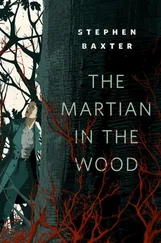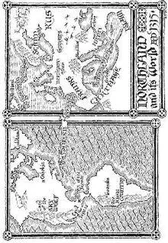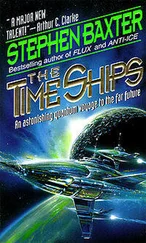The ability to wage war on the planet of another star is a quite remarkable accomplishment by those interstellar master traders RDA. But ultimately it is not just the Na’vi RDA finds itself fighting, but Pandora itself: a living world.
PART SIX

LIVING WORLD
“Our great mother Eywa does not take sides, Jake; only protects the balance of life.”
—Neytiri
Among Avatar ’s most wondrous sequences are those showing Jake Sully’s first encounter, in his avatar body, with the rich environment of the Pandoran forest. OK, it ended up with a lot of running away from a thanator. But who could forget Jake’s discovery of those big spiral trumpet-like plants (the helioradians) that, at a touch, shrank down into the ground?
How did Avatar ’s designers dream up such a marvellous and convincing world?
First impressions: the ecosphere we see on Pandora is evidently a kind of rain forest, dominated by the tremendous trees that are so important to the Na’vi. Various other flora include what look like Earth’s ferns, palms, bamboos and grasses. Pandora is evidently an environment as rich in resources and energy flows as tropical Earth, and natural selection has produced an ecology as diverse and complex as anything on Earth.
However Pandora’s conditions differ from Earth. The lower gravity, thicker air, strong magnetic fields and different day–night cycles have all shaped the evolution of life, as we will see. One obvious example is gigantism; thanks to the lower gravity, many of the plants we see are like terrestrial forms grown huge. As for magnetism, the anemonid is a carnivorous plant that absorbs metals from the soil, giving it the ability to use Pandora’s magnetic field for movement, a feature RDA’s biologists refer to as “magnetonasty.” And a plant called sol’s delight, or Calamariphyllum elegans—“ elegant squid-like plant”—is “magnetotropic,” that grows in the direction of magnetic fields. The “delight” name comes from the fact that the plant helps RDA’s miners detect unobtanium deposits by conveniently straining towards them.
But in devising this ecology, as with other aspects of the movie, the designers have always kept in mind the audience’s needs. They have given us a world that is strange, but with elements of the familiar from Earth, twisted and distorted to give an impression of the alien. That’s why Pandora is green! Plants on Earth are green because of the chlorophyll in their cells, the chemical compound that supports photosynthesis, processing the energy of sunlight for growth. Maybe, as sunlight is such an easily accessible energy source, on worlds with transparent atmospheres like Pandora and Earth some kind of photosynthesis is always likely to evolve. But there are different chemical ways to achieve photosynthesis; leaves don’t have to be green. The greenness of Pandora is a design choice.
The trees are the single most important element of the Pandoran forest, as in all forests on Earth. The main canopy tree is called the beanstalk palm, growing as much as a hundred and fifty metres tall. To the Na’vi it is tautral , the “sky tree.”
Earth’s greatest trees, the sequoias, don’t grow as high as this, but they are remarkable organisms in themselves. Today, sequoias are confined to a strip of the Pacific coast of North America. They flourish in the mountains, which trap moisture coming off the ocean; the tallest specimens grow in valleys and gullies where streams flow year-round and there is regular fog drip, which helps keep the trees’ upper leaves supplied with moisture. The sequoias are part of a habitat which supports many species of plants and animals. In the 1990s, tree-climbing biologists discovered a treetop ecology based on soil that had formed high above the ground from leaf mulch and other decayed vegetable matter.
Sequoias can be as tall as a Saturn V rocket, and older than Christianity. They are remarkable inhabitants of planet Earth.
Meanwhile in the undergrowth, deep, rich, dense and luminous, visually the Pandoran forest has something of the feel of the underwater world—you might be reminded of a coral reef, perhaps. In fact on some coral reefs there is a shrinking-trumpet plant like the helicoradians Jake encountered, the “Christmas tree worm,” Spirobranchus giganteus , that does indeed withdraw into a tube when disturbed. The woodsprites, “seeds of the sacred tree,” look a lot like jellyfish. Much larger jellyfish-like beasts float by like natural airships. The Mother Tree in the Tree of Souls has tendrils that resemble the tentacles of sea creatures. This oceanic influence is no surprise. After James Cameron completed the very aquatic movies The Abyss and Titanic , he made six deep ocean expeditions, filming in 3D. At the time of writing he is planning an expedition to the Pacific’s Mariana trench, the deepest point on Earth, a point nobody has visited since 1960.
And Cameron did base his vision of the forests of Pandora (partly) on the coral reefs he encountered in the ocean’s depths. This is appropriate because a coral reef, like a rain forest, is an example of a “climax ecosystem,” a complex and rich environment in which large numbers of animals and plants have coevolved.
It was Charles Darwin himself who first figured out how coral reefs work. Corals themselves are tiny anemone-like organisms that leave behind tough little skeletons. (In the past, reefs have also been built by other organisms such as algae, sponges, molluscs and tube worms.) With time these skeletons can heap up into huge reefs; Australia’s Great Barrier Reef stretches for two thousand kilometres around the north-east coast of Australia.
The secret of a reef as a habitat for life is that it “fills in” what would otherwise be an empty column of water above a flat ocean floor. A reef is a highly complicated three-dimensional structure, full of crevices and folds and cracks, ripe for colonisation by other life forms. On land, forests do the same thing, the tall trees rising up from the ground to vastly increase the effective surface area available for life. And so coral reefs are thick with fish, molluscs, sponges, echinoderms (starfish and sea urchins) and other forms of life, all shaped by evolution into complex chains of symbiosis, competition and cooperation—just as we glimpse in the Pandora forests. (Ironically, on Earth the coral reefs that are such an inspiration for Avatar are dying back. This is an ecological disaster but also a human one, as there will be economic losses for fisheries and tourist resorts, and coastlines will be left less protected from the ocean.)
But on Pandora, within that intricately interconnected biosphere, there are a rather large number of living things that bite.
The first truly spectacular animal that avatar-Jake confronts is a hammerhead titanothere. This is a massive six-legged quasi-rhino, heavily armoured, with a “hammerhead” muzzle reminiscent of another aquatic creature, a hammerhead shark. And the beast has a spectacular threat display, designed to scare off any ambitious predators, and indeed would-be rivals from within the titanothere’s own species; these are very territorial animals.
But the hammerhead, a herbivore, is somewhere near the bottom of Pandora’s land-based food chain. The hammerhead eats the Pandoran equivalent of grass, shrubs, leaves, and in turn is eaten by predators like the viperwolves. These scary beasts are six-legged pack hunters that run like dogs, but are also nifty climbers thanks to their ape-like paw-hands. And they are highly intelligent, as you can tell from onscreen evidence of communication as they hunt Jake. There are evidently creatures that prey on the viperwolves in turn, such as the thanator, a beast like a lion or a panther, a relative of the viperwolf.
Читать дальше











